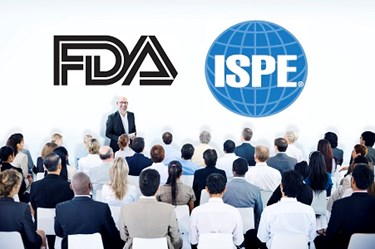4 Key Takeaways From The ISPE/FDA/PQRI Quality Manufacturing Conference

By Ken Congdon

I was lucky enough to attend the ISPE/FDA/PQRI Quality Manufacturing Conference at the Mayflower Renaissance Hotel in Washington DC June 1-3. This event brought together several of the leading minds in pharmaceutical manufacturing including ISPE and PQRI board members, FDA officials, and top-level executives from some of the world’s foremost pharmaceutical companies. Topics covered ranged from manufacturing modernization and quality initiatives to regulatory compliance. While most of the educational content was valuable, the following are the four themes weaved throughout the conference that resonated most with me.
1.Continuous Manufacturing Is The Future — Many of the sessions at the Quality Manufacturing Conference demonstrated the merits of continuous manufacturing. Several presenters in attendance spoke of the need to go from powder to pill in a single step, which represents a huge departure from the industry’s traditional batch processing mentality. Cited benefits of continuous manufacturing include enhanced flexibility and agility, accelerated processing, improved product quality, smaller physical space requirements, and overall cost reduction. Most presenters agreed that OSD (oral solid dosage) continuous manufacturing facilities will be implemented broadly in the near future. In fact, many of these thought leaders shared several examples of how continuous manufacturing is already underway at several leading pharmaceutical companies including Novartis, GSK, AstraZeneca, and Janssen.
2.It’s Time To Get Serious About Drug Shortages —The drug shortage crisis currently affecting the U.S. was another key focus area at the conference. During her presentation, Captain Valerie Jensen, Associate Director of the FDA Drug Shortages Program, provided statistics that illustrate how significant this problem actually is. According to the FDA, drug shortages peaked in 2011 with 251 shortages reported. Since then, 117 new drug shortages were reported in 2012, with another 44 reported in 2013.
Earlier in the conference, Dr. Janet Woodcock, Director of FDA/CDER, stressed that drug shortages represent a failure in lifecycle management, should be predictable, and pose a huge risk to patients. Both the FDA and ISPE are taking steps to address drug shortages by focusing on how pharmaceutical quality is measured and regulated. For example, the FDA issued a Strategic Plan for Preventing and Mitigating Drug Shortages in October 2013. Similarly, the ISPE launched its Drug Shortages Prevention Plan a year later in October 2014.
Again, both of these plans focus largely on ensuring manufacturing quality. However, there was one presenter in attendance — Andy Skibo, Head of Global Biologics Operations and Real Estate at MedImmune/AstraZeneca — that believes supply chain issues are another primary contributor to drug shortages and that this area is being largely overlooked by the industry. According to Skibo, analyzing the quality risks without taking supply chain risks into account is of marginal value in the effort to combat drug shortages. From his perspective, the two must go hand-in-hand if the industry wants to truly make headway in reducing drug supply issues.
3.The Stage Is Set For A Biologics Boom — One of the primary reasons Skibo stressed the need for enhanced supply chain visibility and risk management at the conference is because he believes the biologics space is poised for explosive growth — growth that most pharmaceutical manufacturers are ill prepared to address. Skibo shared many compelling statistics that predict the imminent biologics boom including:
- The percentage of bio sales within the top 100 products is expected to increase from 45 percent to 52 percent by 2020
- The oncology drug market is experiencing the largest and fastest growth at 11% annually
- The biosimilar market is expected to grow to $25 billion by 2020 and will absorb significant capacity
- Emerging markets will grow from 30 percent in 2012 to 40 percent of all global prescription sales by 2017
- The U.S. market for predictive personalized drugs is expected to double from 2013 to 2019
Skibo argues that while the growth of biologics is clear, the pharmaceutical industry is currently at its lowest point of capacity, agility, and resiliency — making it difficult for manufacturers to address these new demands. He believes much progress needs to be made in these areas, and supply chain visibility and management is a huge part of improving the product lifecycle.
4.Pharma Strives To Be More Self-Regulating —In 2005, Woodcock shared her vision for a “maximally efficient, agile, flexible, pharma manufacturing sector that reliably produces high-quality drug products with limited regulatory oversight.” Over the past decade, the pharmaceutical industry has taken baby steps toward this end goal — the latest of which is the ISPE Quality Metrics Program.
The goal of the Quality Metrics Program is to identify and establish consistent quality standards that can be applied throughout the industry, allowing the pharmaceutical industry to be more accountable for their own performance thereby reducing the FDA’s influence on quality initiatives. Attendees of the Quality Manufacturing Conference were updated on the key findings of the Quality Metrics Program Pilot and how this data can potentially impact pharmaceutical processes going forward.
Several measurable quality data points and indicators were uncovered during the pilot study and some clear relationships among these data points were also identified. For example, trends in critical complaints were consistent with the number of recalls, higher deviation rates correlated with lower lot acceptance rates, and sites with stronger corporate culture scores had higher lot acceptance rates. For more information on the data generated by the ISPE Quality Metrics Pilot, read my article Pharma’s Quest For Consistent Quality.
